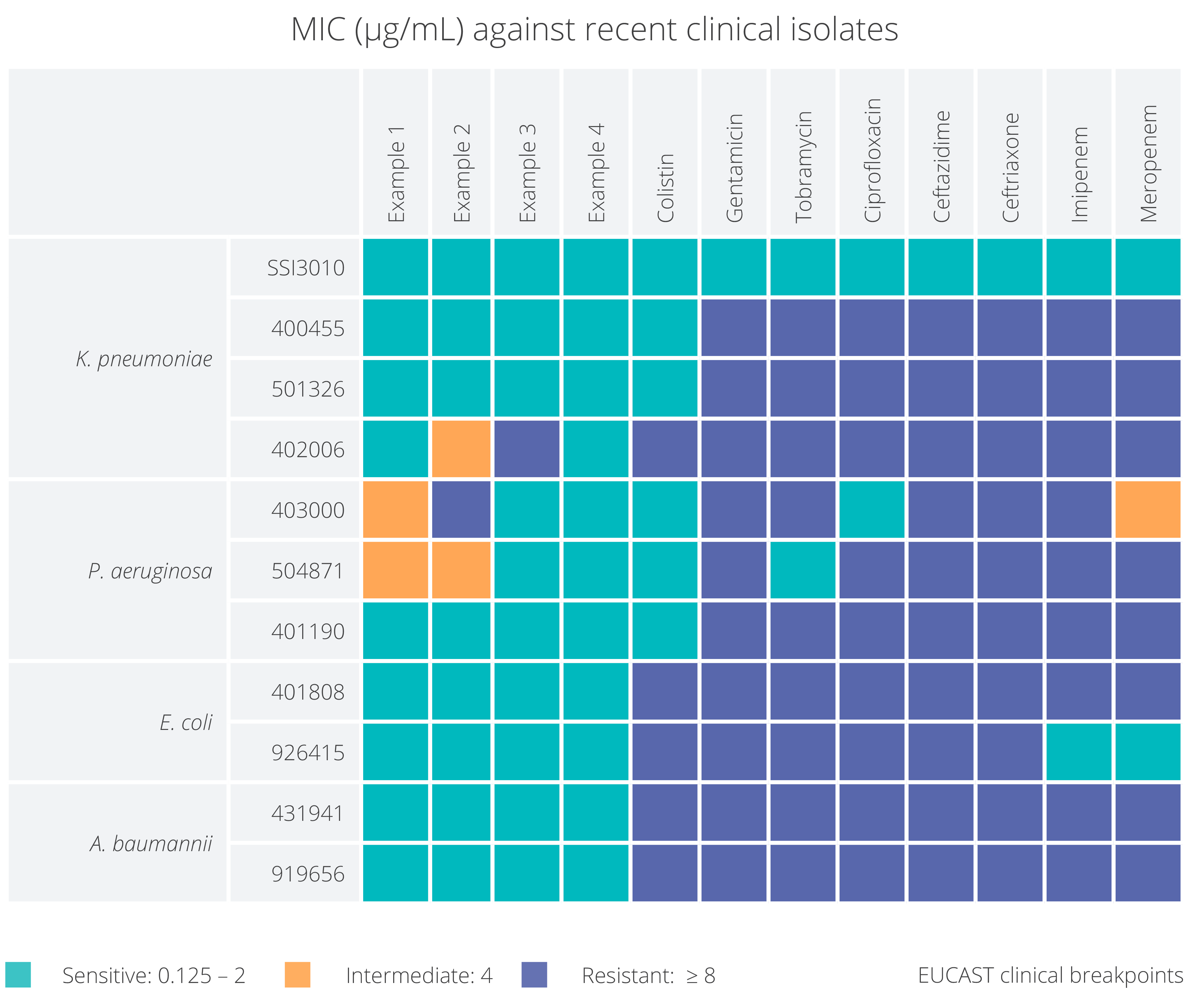Breakthrough Platforms
Macrocycle and OMPTA Platforms
Outer Membrane Protein Targeting Antibiotics (OMPTA) Platform
![]()
Antibiotics of the OMPTA class combine high-affinity binding to both LPS and outer membrane proteins, resulting in high specificity towards Gram-negative bacteria and efficient bactericidal activity. Our innovation focuses on three targets within OMPTA class exclusively targeting WHO priority 1 pathogens.
- LptD/E: Inhaled Murepavadin Entering Phase I (IMI funding)
- LPS and BamA: Hit to Lead (CARBX funding)
- LptA Thanatin Derivatives: Hit to Lead (CARBX funding)
The current lead compounds demonstrate potent antibacterial activity against a broad range of pathogens, such as Escherichia coli, Klebsiella pneumoniae, Enterobacter spp, Acinetobacter baumannii, Stenotrophomonas maltophilia and Pseudomonas aeruginosa – including the pandrug-resistant isolates where there are currently no treatment options available.
The potent in vitro activity has also been demonstrated in vivo. Significantly, the compounds have shown both potent in vitro and in vivo activity towards colistin-resistant isolates (colistin is considered as the treatment of last resort against Gram-negative ESKAPE pathogens).

Excellent activity of PEM antibiotic lead compounds against a broad spectrum of Gram-negative strains including MDR bacteria
Macrocycle Platform
Macrocycles are a proven chemical class of pharmaceutical therapeutics occupying the chemical space MW between small molecules and biologics. With a unique conformational balance between flexibility and rigidity, macrocycles can target both extracelluar and intracelluar targets not easily accessible by other chemical classes.
Indeed, since 2014 alone, some 19 distinct macrocycle compounds have been approved by various drug regulatory authorities worldwide, involving a wide range of diseases and indications. More recently, with the emergence of the molecular glue and protein degrader field, macrocycles are increasingly recognized as possessing significant potential to target unique molecular targets and be combined with complementary technologies.
Spexis possesses two distinct, highly diverse and very well characterized macrocycle libraries, together with deep data on same: PEMFinder, which is comprised of peptidomimetic macrocycles, and MACROFinder, which are small molecule macrocycles. Each have distinct applications depending on the targets in question. In addition, we have several interesting pre-clinical leads for various indications which have already been considerably characterized.
We are interested to partner either these pre-clinical leads or the entire platform itself – the latter particularly in combination with molecular glue or protein degrader technologies. Indeed, we could also consider forming a spin-out or an affiliates of the platform in partnership with investors or other firms in this space in order to more fully exploit its potential.